Assisi, Umbria, Italy, Sunday, September 30, 2012
Breakfast today is just alright with nothing special. There is some salami and a little ham but Carol does not like it. They have some fruit filled croissants which are not bad and a blackberry tart that is pretty good. There isn’t much else.
After breakfast, we head out to see the Basilica of St. Francis. It is about a mile walk but is for the most part pretty flat. The church has both an upper and lower Basilica and we opt to see the lower one first. We enter the church and there is mass going on. We are losing track of the days and did not even realize it was Sunday.
You can still visit certain areas so we start with the tomb. His remains are above the altar now but when the Basilica was being built they were hidden to protect them from those who might steal them. Over the next 600 years, their exact location was forgotten. In 1818, when they were going to open the tomb to the public, it took over a month to find them. His four closest friends are buried here with him. One, Jacopa die Settisoli , a female was turned away from his deathbed, after traveling from Rome to see him, because she was female. Francis welcomed her to his side. I ask an usher when the last mass will end and it is at 1230 so we plan to come back here then.
For now, we go up to see the upper basilica. The stained glass windows from the 13th and 14th century were like bibles for the poor and illiterate. They tell stories from the bible so all can see. Also, from 1297-1300, Giotto (remember him) frescoed the walls with 28 scenes depicting the life of St.Francis.
Francis traded a life of power and riches for one of obedience, poverty, and chastity. He was never ordained as a priest but had a hugh effect on Christianity. He followed in Jesus’s footsteps living as a poor, wandering preacher. He treated everyone and everything as equals, poor, rich, and Popes. The Franciscans lived simply sleeping outside, begging for food, and did not have any material possessions.
On September 17, 1224 , while praying on Mount Alberna, a six winged angel gave Francis the mark of the stigmata. The five wounds suffered by Christ marked his body for the rest of his life. Francis died young on October 3, 1226 from tuberculosis. We go out in the courtyard and tour the treasury of the cathedral with more artifacts from the church and surrounding area. I see some beautiful pieces which intrigue me because they come from the Trapani area in Sicliy, which is where my Nana Rose came from. I will have to research them more later.
Leaving the treasury, we decide to check out some other churches while we wait for the lower basilica to open. Walking down the main street, we pass a small Oratory where they used to care for sick pilgrims. A little further up are some deteriorating frescoes. The only people left on the three panels are St. Francis, St. Clare, and Jesus.
We walk around visiting the Chiesa Nuova, small St. Stefano, whose bells miraculously rang on the day St. Francis died, and the church of San Pietro. At the last one, an Italian wedding is ending so we wait and watch for the bride and groom to exit. It is quite a scene. The church itself is very Romanesque with amazing stonework and a beehive looking dome. We decide to eat tonight in a nearby restaurant and go back to Locanda del Podesta tomorrow night. From here, it is a short but uphill walk back to the lower Basilica of St. Francis.
The altar is built directly above the tomb of St. Francis and the ceiling depicts scenes of obedience, chastity, and poverty. The Franciscan robe is tied with a simple rope in three knots, a reminder of the bows of obedience, chastity, and poverty. In the center of the ceiling is Francis on a heavenly throne in a golden robe, the reward for a simple good life led on earth.
We now go into the chapel of the relics containing relics of the saint. It has the tunic that St. Francis wore patched with simple cloth, a cloth weaved by his friend, the Roman Lady Jacopa ( whom he called “brother” Jacopa) who used to wipe his brow on his deathbed, and the slippers he wore after receiving the stigmata as it was too painful to wear sandals. There are other fascinating items as well. We enter back into the Basilica and admire another Giotto painting, this one of the crucifixion. There is also a fresco by Cimabue, which is supposed to be one of the most accurate portrayals of Francis as described by someone who knew him. The other artwork in the transepts is equally amazing.
After leaving the Basilica, we go to the pizza place we ate at yesterday and get two slices of pizza because they were out of the spinach and sausage torta that we had yesterday. We had also stopped at the market and bought a beer so we sit in the Piazza drinking beer and eating pizza.
Replenished and never ones to stop when we are a bit tired, we convince ourselves that we should walk down a little below town to visit San Damiano. This monastery is where St. Clare lived and died and also where St. Francis would spend time in a hut meditating and writing. He wrote his poem Canticle of the Sun here and it is the location where he prayed under the cross that spoke to him.
We leave the upper town and descend to the path leading to San Damiano. It is all downhill so we know the return is going to be fun. At the edge of the convent there are signs asking you to be silent and respect the sanctuary. When we reach the church and monastery, you walk through the chapel where St. Clare prayed, the cloisters, and the room where she died. It is a very quiet place compared to the Basilica filled with people.
The walk back up is a steady climb but we do pretty well. Time to rest in our room before dinner tonight. However, we start talking to the hotel manager and a lady clerk we had not seen before. The conversation is quite interesting. She is German but has lived in Italy for over 20 years. Interesting perspective on Italians verse Germans. Daniele, the manager grew up here but spent time working in New York and New Jersey. He is very entertaining and we learn a lot about Italian life, problems, politics, and Assisi. Very interesting stuff, especially how tribal the culture still is, which makes it hard to get things done. For example, Perugia burnt down Assisi twice and they still remember it here even though it happened before we were even a nation. I can equate this somewhat to our native Americans and African Americans who hold on to the past. It makes things more difficult for the future. We spend almost two hours chatting and there went our rest before dinner. Well worth it though.
Later in the evening, we walk to dinner and the meal is pretty good but not anywhere as good as last night. Hopefully we have not been spoiled for the rest of the trip. We get a mushroom ravioli dish and another 4 course meal consisting of bruschetta, penne alla norcina, pork steak, and roasted potatoes. Bottle of white for Carol tonight which comes to a table as a red. Since she didn’t know I ordered white and liked the red last night, she says to stick with it. After dinner, we stroll back to our room, happy once again to be on this journey.
CNC
Expenses
4.40E- 2 slices pizza at Pizzeria Da Andrea.
9E- Pistacchio Panforte from Pasticceria Santa Monica.
2E-beer from market
5E- 2 gelatos
37E- penne alla norcina, mushroom ravioli, bruschetta, pork steak, roast potatoes, at Ristorante de Cecco
48E- Hotel Roma
Miles Walked – 9.3 Miles
- Assisi Street With Flags
- Piazza Del Comune
- Lower Basilica
- St. Francis Denouncing His Riches
- St. Francis Receiving Stigmata
- Choir Seats
- Courtyard of Basilica
- Relics From Trapani Nana’s Town
- View of Hills of Assisi
- Hills and Valleys of Assisi
- St. Clare Receiving Stigmata
- Pax Means Peace
- Backstreets of Assisi
- Inside St. Stefano
- Friar Praying in Chiesa Nuova
- San Pietro
- Beehive Looking Dome
- St. Francis in Heaven
- Lower Basilica of St. Francis
- St. Francis Tunic
- Cimabue Painting St. Francis on Right
- Crucifixion by Giotto
- San Damiano Cloister
- Back Up the Hill


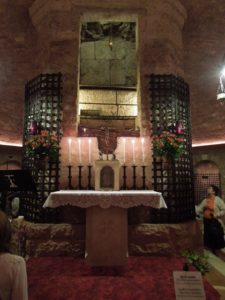
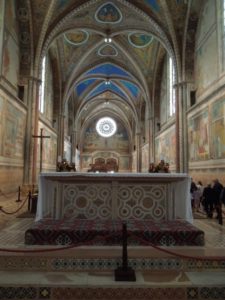
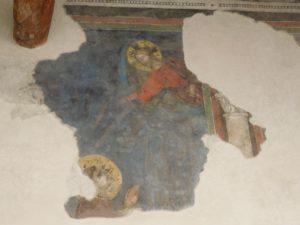
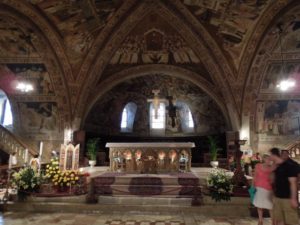
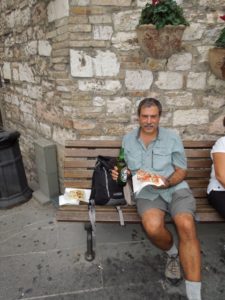
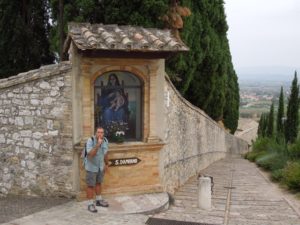
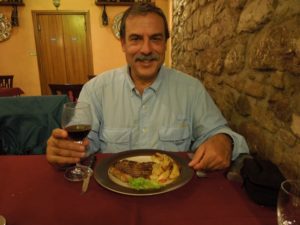
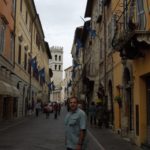

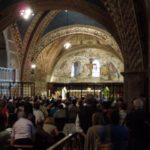
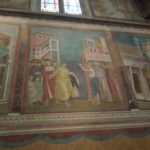
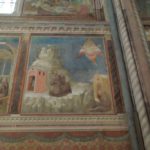
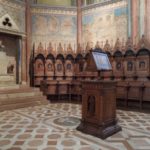
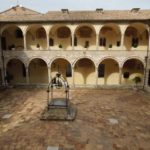
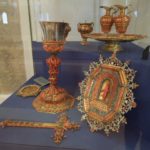
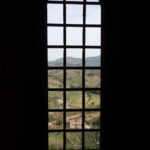
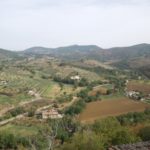

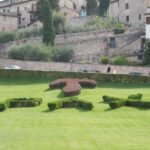
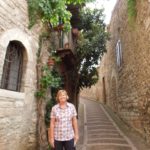
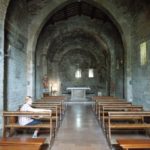
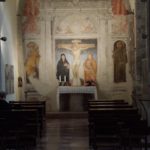
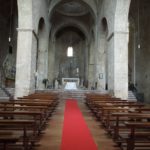
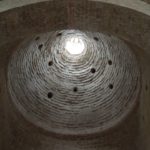
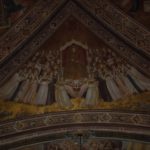
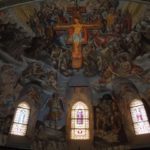

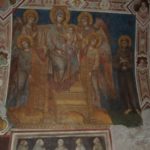
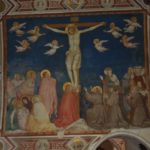
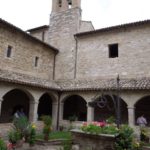
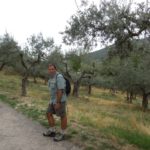
No Comments Yet